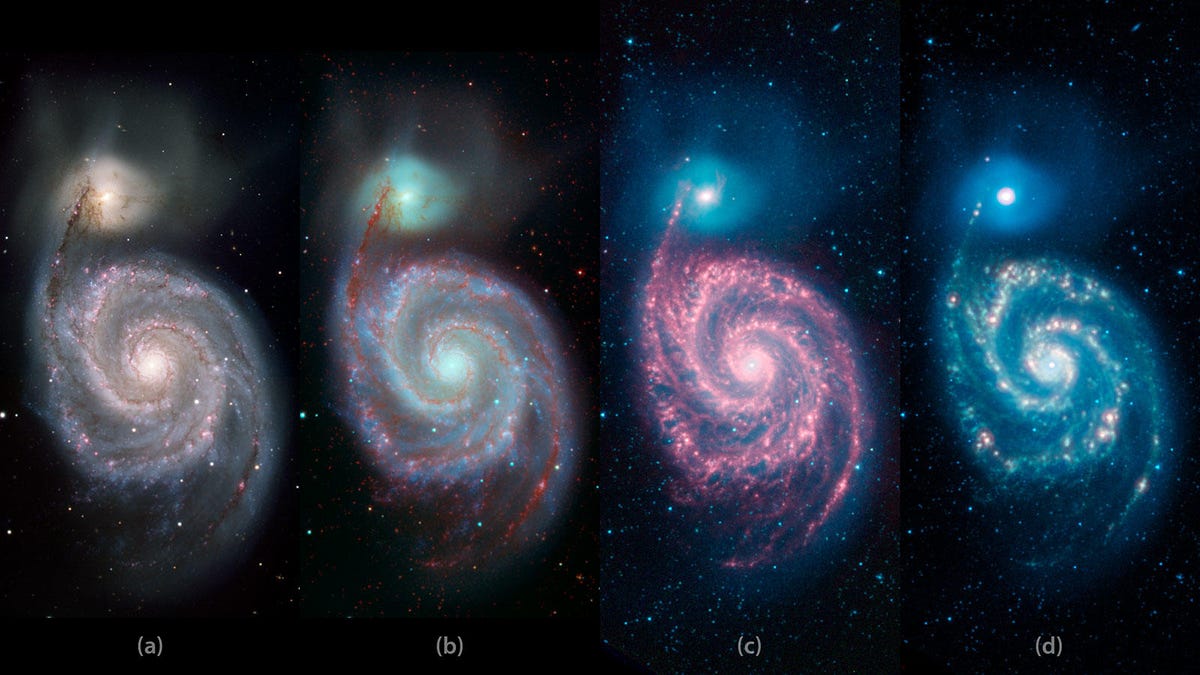NASA's Whirlpool Galaxy views are totally trippy, spaced-out spirals
The space agency's Spitzer Space Telescope gives astronomers a superpower that does more than provide psychedelic screen saver images.

Four different views of the same spot on the other side of the universe.
NASA's Spitzer Space Telescope is able to see parts of space that are literally invisible - to our puny human eyes, that is.
The above quadriptych of images shows the same thing: the Whirlpool Galaxy, also known as Messier 51 or NGC 5194/5195, but at different wavelengths.
Keep in mind that there are different kinds of light and what our eyes can see is referred to as visible light, but using a device like Spitzer that can also see infrared light can make invisible features visible. It's basically the same as night vision, but in this case it's space vision.
The view on the far left above shows the Whirlpool Galaxy as your eyes would likely see it. In this case the image was taken by a telescope at the Kitt Peak National Observatory in Arizona.
But the two images on the right side show what it looks like when Spitzer isolates different infrared wavelengths from the galaxy. Combine infrared and visual light and you get the image marked (b), providing arguably the most complete picture of the galaxy. NASA shared all four of the images side-by-side for comparison on Wednesday.
In the second image, red veins appear to flow through the spiral arms of the galaxy. What you're actually seeing are threads of dust that block visible light and just appear as empty space in the first image, but they glow red when seen through Spitzer's infrared eye.
Making invisible clouds of dust and gas seen might not sound like the greatest trick in the world, but being able to see at different wavelengths helps astronomers pick up on the births and deaths of stars, among other cool things.
Spitzer's super power has also revealed the largest of Saturn's rings and even helps to spot small asteroids, a task that humanity can always use more help with, seeing as one just smashed into us last weekend.

